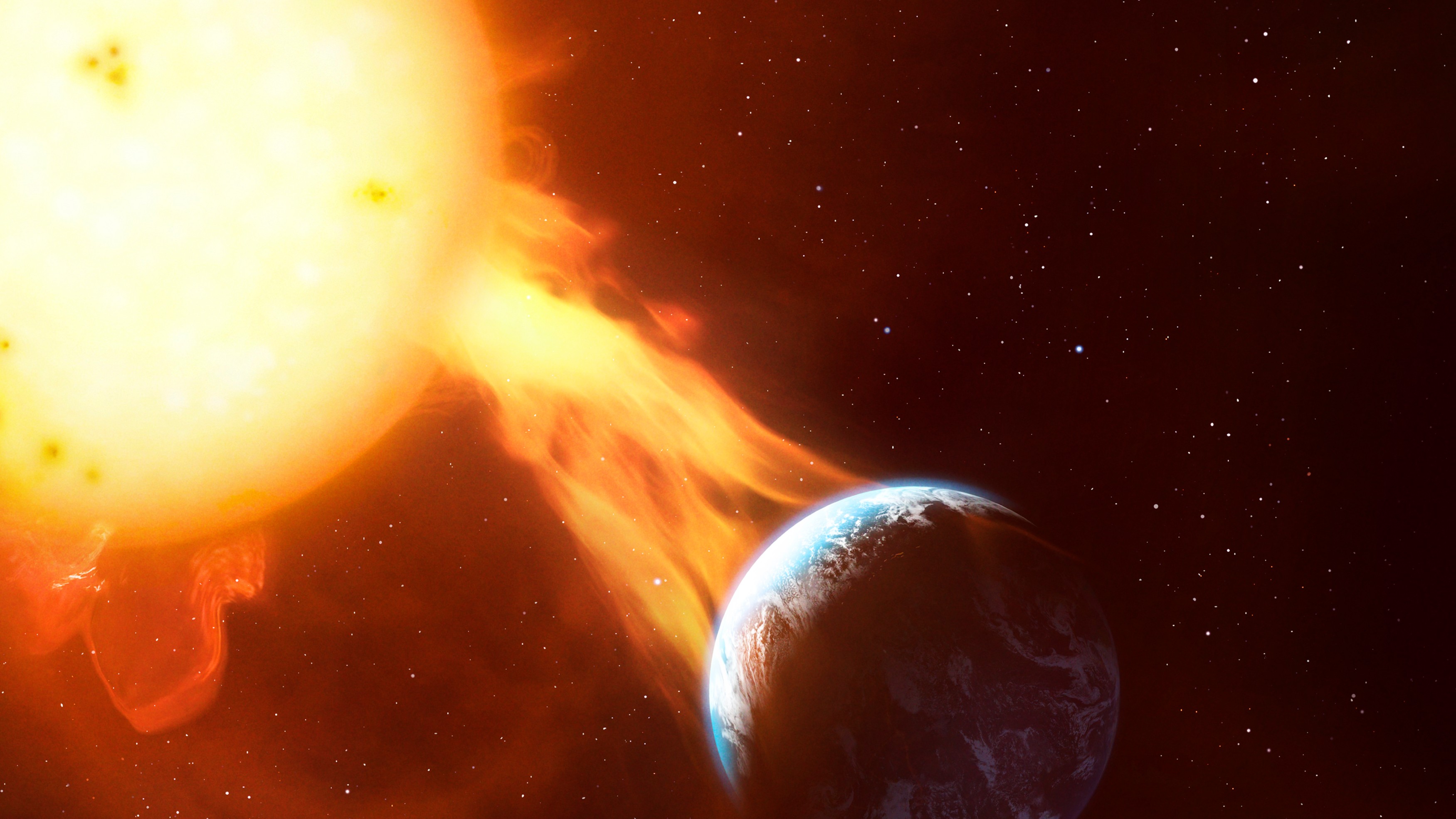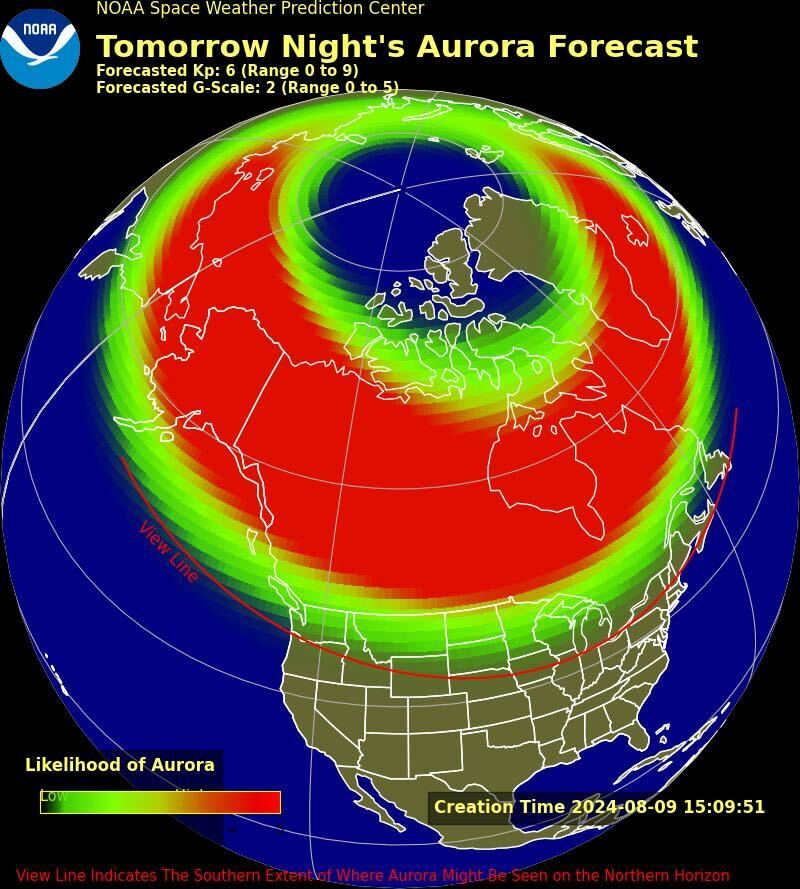Barrage of solar explosions could bring auroras to the U.S. this weekend as Perseid meteor shower peaks
Three powerful solar eruptions could bring auroras as far south as New York and Idaho right at the peak of the Perseid meteor shower this weekend.

Three high-speed solar explosions known as coronal mass ejections (CMEs) are set to slam into Earth's magnetic field this weekend, bringing stunning auroras as far south as New York and Idaho.
Striking Earth in succession on Aug. 9, 10 and 11, the CMEs will coincide with the peak of the Perseid meteor shower, according to a National Oceanic and Atmospheric Administration (NOAA) Space Weather Prediction Center alert.
If a geomagnetic storm is triggered, the sun eruptions will create a curtain of shifting light through which the bright tails of the Perseid shooting stars can be seen.
NOAA predicts possible auroras this weekend in the northern parts of most states along the U.S.-Canada border, including Washington, Idaho, Montana, North and South Dakota, Minnesota, Wisconsin, Michigan, New York and Maine. Here is the agency's latest aurora forecast.
The third and final CME, which burst from the sun's surface on Aug 8., "is moving faster than 1,000 km/s (2.2 million mph) and it will likely arrive no later than Aug. 11th, adding its effect to that of two earlier CMEs [which erupted on Aug. 7] already en route," according to an update from spaceweather.com.
CMEs originate from sunspots, regions on the sun's surface where powerful magnetic fields, created by the flow of electrical charges, coil into knots before abruptly snapping.
The massive energy release can eject gigantic plumes of solar material from the sun's surface out into the solar system. Once launched, CMEs travel millions of miles per hour, sweeping up charged particles from the solar wind to form a giant, combined wavefront.
Sign up for the Live Science daily newsletter now
Get the world’s most fascinating discoveries delivered straight to your inbox.
Related: Sun fires off double-barreled X-class flares in span of 2 hours
These high-speed barrages of solar debris are safely absorbed by Earth's magnetic field, but they can still cause impressive geomagnetic storms. During these storms, the field lines that loop between our planet's south and north magnetic poles get compressed slightly by waves of highly energetic particles.

These particles trickle down magnetic-field lines close to the poles and agitate molecules in the atmosphere, releasing energy in the form of light to create colorful auroras known as the northern lights.
NOAA classifies geomagnetic storms from G5 to G1, going from strongest to weakest. This weekend's storm is expected to be a mild G2 class, but if the effects of the CMEs combine "the impact could push geomagnetic storm levels to category G3 (Strong) with mid-latitude auroras in the USA and Europe," spaceweather wrote.
More intense geomagnetic storms can disrupt our planet's magnetic field enough to send satellites tumbling to Earth, and scientists have warned that extreme geomagnetic storms could even cripple the internet.
The largest solar storm in recent history was the 1859 Carrington Event, which released roughly as much energy as 10 billion 1-megaton atomic bombs. After slamming into Earth, the powerful stream of solar particles fried telegraph systems around the world and caused auroras brighter than the light of the full moon to appear as far south as the Caribbean.
Scientists warn that if a similar event were to happen today, it would cause trillions of dollars' worth of damage, trigger widespread blackouts and endanger thousands of lives. A solar storm in 1989 released a billion-ton gas plume that caused a blackout across Quebec, according to NASA.
Solar storms typically undergo an uptick during the maximum phase of the sun's 11-year cycle. Some experts think this solar climax will arrive in 2025, but the sun's defiance of recent forecasts has led others to believe the maximum may already be here.
Scientists anticipate that the sun's activity will steadily climb for the next few years, reaching an overall maximum in 2025 before decreasing again.

Ben Turner is a U.K. based staff writer at Live Science. He covers physics and astronomy, among other topics like tech and climate change. He graduated from University College London with a degree in particle physics before training as a journalist. When he's not writing, Ben enjoys reading literature, playing the guitar and embarrassing himself with chess.










